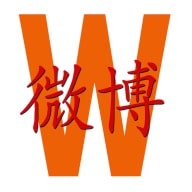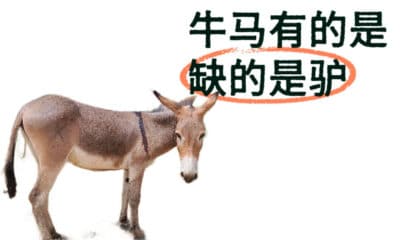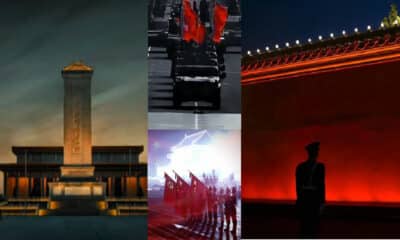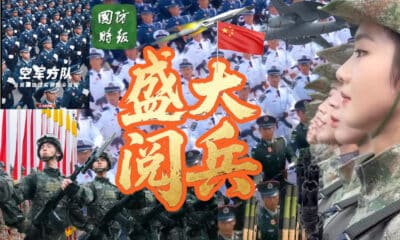Featured
Weibo Watch: A Different Year
2023 became the year of trying to get back to normal life, the year of getting to enjoy traveling again, the year of opening up international exchanges, and the year of grappling with recurring Covid waves and social distrust.
Published
2 years agoon
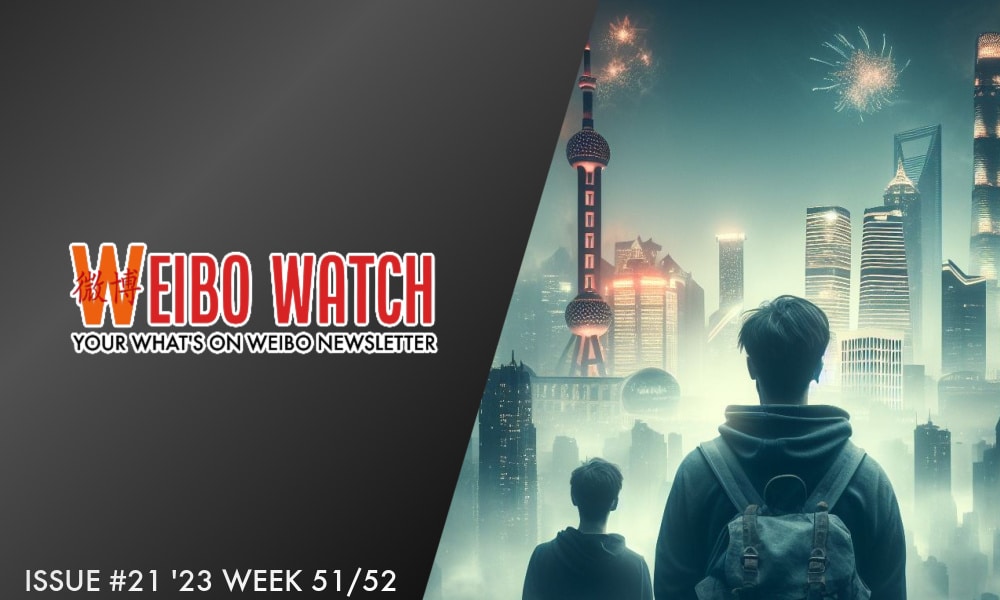
PREMIUM NEWSLETTER | ISSUE #21
Dear Reader,
As many of you are preparing, celebrating, or recovering, I’ll keep this week’s newsletter shorter than usual. But on New Year’s Eve, I can’t help but reflect on the last year. After a decade of closely following Weibo trends, I’ve found that certain themes stand out more in some years than in others.
There were previous years when the pursuit for social or consumer justice was notably clear, weaving through numerous trending stories. In some years, digital nationalism surged, bolstered by state media amplifying nationalist sentiments among netizens. At other times, Chinese social media users showed increased resistance against official narratives and online censorship. We’ve witnessed years marked by celebrity crackdowns and the rise of the celebrity economy. Additionally, there were periods when the rural-urban divide in China took center stage, with narratives from migrant workers shedding light on the challenges faced by society’s most vulnerable social groups.
While reflecting on a year in China might typically align better with the Chinese New Year rather than the Gregorian calendar, the year 2023 is different. This truly was a special year due to the abrupt end to China’s ‘Zero Covid’ in December of 2022. That year ended with discussions surrounding China’s major policy shift and national Covid-19 wave. Right from the early start, the new year then became the year of trying to get back to normal life, the year of getting to enjoy traveling again, the year of opening up international exchanges, and the year of grappling with recurring Covid waves.
Understanding the full ramifications of the pandemic—be it on our mental health, the implications for children growing up during this period, or shifts in social norms and work culture—will probably take years of research. While debates continue, it’s evident that younger generations, in their formative years, have been significantly impacted. Globally, our shared experiences show both clear similarities and stark differences.
Recently, I’ve noticed in Europe when giving talks or getting interviewed about news events, people seem to completely overlook the timeline of events in post-Covid China. To them, Covid already seems like a distant memory. They forget that it was not until March of 2023 when China resumed issuing all types of visas, until mid August when the ban on Chinese group travels was lifted, or that it wasn’t until early summer when most people in China experienced their second ‘Covid positive.’ And that the big post-pandemic rebound of influenza just happened a few weeks ago.
In this post-Zero Covid year, social trust has emerged as a dominant theme across various trending stories. While (low) trust has always been a pivotal theme in modern-day China, specific periods often reveal discernible trends related to this, such as heightened distrust in official media, local governments, medical institutions, or certain industries. This year, social trust appears fragile in multiple dimensions, as the Covid years have deeply influenced trust dynamics at local, regional, and national levels.
This was evident in the death of the student Hu Xinyu, when people thought details surrounding his disappearance were purposely being hidden or not revealed to the public. It was visible in the anger over Cathay Pacific mocking Chinese, non-English speaking passengers, which became one of the biggest marketing disasters of the year together with the BMW ice cream gate. It was visible in the controversy surrounding influencer ‘Lipstick King’ who lashed out against viewers questioning the price of an eyepencil, or in the scandal surrounding comedian Li Haoshi, who made a joke refering to the PLA. So many train incidents also went viral this year, with the high-speed train slapping incident showing that minor misunderstandings or annoyances can quickly escalate into conflicts and confrontations. The thefts at the Midi Music Festival, the Zhongshan hospital controversy, and scrutiny of Red Cross relief efforts in Gansu further illustrate instances where dwindling trust fostered resentment, skepticism, and misinformation.
This is one of the reasons why the story about the rat head in a school canteen meal made such an impact this year. As the distasteful discovery went viral—the rat still had its teeth and ears— the school maintained that it was not, in fact, a rat, but a duck head that was found in the rice. The entire incident led to laughter and online jokes, but behind the hashtags there was a lot of cynicism and anger over how shamelessly this problem was solved by those in charge: they simply turned the rat into a duck.
You can find the related popular buzzphrase, “calling a rat a duck” (指鼠为鸭), in our newly published list of top 25 buzzwords and phrases of 2023, which also reflects on the past China year.
For now, I’m wishing you a very happy and healthy 2024, with renewed optimism, mutual respect, and new foundations of trust to build on.
Best,
Manya
What’s Trending

1: Top 25 Buzzwords | Here are 25 Chinese buzzwords and catchphrases, listed by What’s on Weibo, that reflect social trends and changing times in China in 2023. This article also lists the top 10 of the most noteworthy buzzwords curated by the Chinese linguistics magazine Yǎowén Jiáozì (咬文嚼字).

2: A Very PLA Christmas | It is not Santa bringing you peace and joy, it is the People’s Liberation Army (PLA). Chinese state media and other influential social media accounts have been pushing an alternative Christmas narrative this year, which makes it very clear that this ‘Merry Christmas’ is brought by China’s military forces, not by a Western legendary figure.

3: Red Cross China Keeps Getting Criticized | After the devastating 6.2-magnitude earthquake struck Jishishan (积石山), a county in China’s Gansu Province’s Linxia Hui Autonomous Prefecture, on December 18, Chinese social media platforms were flooded with news related to the disaster. The overnight earthquake killed at least 149 people and left hundreds injured. As rescue efforts were underway, an online list detailing items supposedly procured by the Gansu Red Cross for earthquake relief efforts ignited controversy on Chinese social media. Although the Red Cross has denied all rumors, the incident underscores public skepticism towards the organization.
What More to Know

◼︎ Xi Jinping’s Happy New Year Wish | In a short video message published all over Chinese social media and pushed to the trending lists, Chinese President Xi Jinping wished everyone a happy new year from Beijing on December 31st. (Weibo hashtag: “Wishing Everyone a Happy New Year” #向大家致以新年的祝福#, 9 million views).
◼︎ Air Pollution and Safety Precautions Thwart New Year Activities | Various places across China announced on December 31st that there would be no fireworks at midnight due to heavy air pollution. Among them was Shanghai Disneyland, but also Window of the World, a themepark in Changsha, and Huayi Brothers Movie World in Suzhou. Overall, it seems like this year’s New Years’ activities are much more sober than those of previous years, as various places refrained from organizing any form of large-scale public activities. One reasons cited for the absence of many countdown activities was to prevent overcrowding – the Shanghai New Year’s stampede is still engraved in collective memory – but it is not entirely clear if this is the actual reason. (“Shanghai Disney Cancels New Year Fireworks #上海迪士尼或取消跨年夜烟花#; “Many Places Announce That They Won’t Organize New Year’s Activities” #多地发布通知称不组织跨年夜活动#).
◼︎ Death of Henan Junior High School Student Sparks Protests | The death of a young boy at the Yuhuayuan school (育华园学校) in Ningling, Henan, has triggered major discussions these days. Despite the school asserting it was a suicide, the boy’s body revealed numerous bruises and injuries, leading his family to suspect bullying and inflicted violence. After officials dismissed any foul play on December 27th, the boy’s family and supporters rallied around the school, clashing with local police and even entering the premises to demand justice. Since then, some roads near the school have reportedly been blocked off and some of the main hashtag pages surrounding this case have been taken offline. (“Henan’s Ningling Reports Student Fell to His Death” #河南宁陵通报一学生高空坠亡#, taken offline; “Henan Ningling County Denies Student Who Fell to Death Was Bullied before He Died” #河南宁陵县否认坠亡学生生前遭霸凌#, 6+ million views).
◼︎ New Rules for Online Games | China’s regulatory authority has unveiled new draft rules for online video gaming, aiming to foster a “healthier development” of the industry with a focus on safeguarding minors and consumers. These regulations propose prohibiting rewards for daily logins and limiting certain revenue-generating activities such as player duels and significant transactions involving virtual items. On social media, thousands of people commented on the proposed rules, and although many people supported the measures, others believe that online gaming shouldn’t face such stringent restrictions. Public comments on these regulations are welcomed until January 22, 2024. (Weibo hashtag “Draft Regulation for Online Games” #网络游戏管理办法草案#, 130 million views).
◼︎ Mao Zedong 130 Years | This week, Chinese state media outlets marked the 130th anniversary of Mao Zedong’s birth across various social media platforms, urging netizens to “commemorate the great leader.” While some highlighted Mao’s contributions to the empowerment of women in China, others lauded his poetry and writings. Numerous netizens extended birthday wishes to “Grandfather Mao.” Born on December 26, 1893, Mao Zedong passed away in 1976. Unsurprisingly, critical perspectives on the Chairman were notably absent. (Weibo hashtag “Chairman Mao’s 130th Birthday” #毛主席诞辰130周年#, 420 million views).
◼︎ Fiancee Accused of Rape after Engagement | Recently, a significant legal case has garnered attention on Chinese social media platforms. In May 2023, a woman accused her former fiancée of raping her on the night following their engagement party. The man was recently given a three-year prison sentence as part of the preliminary judgment, but details surrounding the case have sparked debates – many netizens suggest that the woman’s motives might have been financially driven. Allegedly, the couple had an agreement stating that before marriage, the man’s family would cover half the dowry and add the woman’s name to his property rights. Speculations arose that the woman pursued legal action upon realizing she wouldn’t secure the property rights she desired. This narrative has fueled rumors, suggesting the incident stemmed more from a marital dispute than a genuine rape allegation. Chinese media outlets have now countered and refuted such claims. (“Man Accused of Rape after Engagement Gets 3 Year Sentence” #男子订婚后被告强奸一审被判3年#, 510 million views).
◼︎ Death of Lee Sun-Kyun | The death of South Korean actor Lee Sun-kyun went top trending on Weibo this week, garnering over 590 million views within just one day. Lee was mostly known for his standout role in the award-winning movie Parasite. He was reportedly found dead in his car on Wednesday, with indications pointing towards suicide amidst an ongoing probe into alleged drug involvement. Lee’s death follows a series of high-profile celebrity suicides in South Korea. On Weibo, countless fans fondly remembered Lee while also voicing disapproval towards those people and media outlets who accused him of facts that were not yet proven. His funeral took place on Friday in Seoul. (Weibo hashtag “Lee Sun-kyun Passed Away” #李善均去世#, 920 million views).
◼︎ Dr. Tao Yong Controversy | Dr. Tao Yong, an ophthalmologist from Beijing with over 2 million followers on Weibo, stirred discussions online when he had his daughter wash dishes on her 12th birthday. He gained prominence in China in 2020 after surviving an attack by a patient wielding a knife. This week, he faced criticism for revealing that he made his daughter wash dishes following her birthday meal. Was he trying to convey certain expectations for his daughter? Why is there an emphasis on girls learning household chores like washing dishes? The seemingly innocuous post sparked significant controversy, with accusations of sexism directed at Tao. He promptly removed the post and clarified that he merely wanted his daughter to embrace more household responsibilities, emphasizing that his remarks were meant light-hearted. Tao learnt an important lesson in this social media age: even a lighthearted or innocent statement can unleash a whirlwind of intense reactions. (Weibo hashtag “Tao Yong Responds to Recent Online Controversy” #陶勇回应近期网络风波#, 190 million views).
Stay tuned for our more elaborate Weibo Watch newsletters in the New Year! Want to look back at our previous 20 issues? You can find them here.
This is an on-site version of the Weibo Watch newsletter by What’s on Weibo. Missed last week’s newsletter? Find it here. If you are already subscribed to What’s on Weibo but are not yet receiving this newsletter in your inbox, please contact us directly to let us know.
Manya is the founder and editor-in-chief of What's on Weibo, offering independent analysis of social trends, online media, and digital culture in China for over a decade. Subscribe to gain access to content, including the Weibo Watch newsletter, which provides deeper insights into the China trends that matter. More about Manya at manyakoetse.com or follow on X.
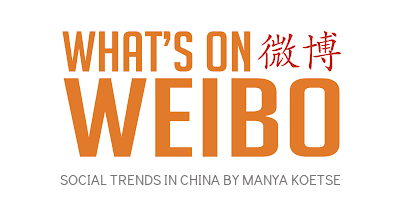
China Tech
How the “Nexperia Incident” Became a Mirror of China–Europe Tensions
From the Dutch invoking a Cold War–era law to Chinese narratives about Europe, this is what gives the Sino-Dutch “Nexperia incident” its extra weight.
Published
8 hours agoon
October 14, 2025
🔥 This is premium content and also appeared in the Weibo Watch newsletter. Subscribe to stay in the loop.
On the evening of October 12, while the Netherlands vs. Finland World Cup qualifier became a hot topic on Weibo (#荷兰4比0芬兰#), something else entirely made headlines — not about goals, but about chips.
Chinese company Wingtech Technology (闻泰科技) issued a statement saying that the Dutch government, citing national security concerns, had imposed global operational restrictions on Nexperia (安世半导体), a Dutch semiconductor company based in Nijmegen that has been wholly owned by the Chinese Wingtech conglomerate since 2019.
The Dutch government reportedly ordered a one-year freeze on strategic and governance changes across Nexperia on September 30, but the news only went trending on Chinese social media after Wingtech revealed the suspension (the topic became no 1 on Toutiao on Sunday).
Wingtech said that Nexperia’s Chinese CEO, Zhang Xuezheng (张学政), was also suspended, and that an independent, non-Chinese director was appointed who can legally represent the company.
That was ordered by a Dutch court following internal upheaval — Nexperia’s Dutch and German executives, including Legal Chief Ruben Lichtenberg, CFO Stefan Tilger, and COO Achim Kempe, filed a petition with the Dutch Enterprise Chamber requesting emergency measures to suspend Zhang and place the company’s shares under temporary court management. The court agreed (also see the Pekingnology newsletter by Zichen Wang, who was among the first to report on this issue).
The next day, on October 13, Dutch newspapers reported on the freeze, describing it as a rare move. NRC called it “an emergency measure intended to prevent chip-related intellectual property from leaving the country,” adding that, according to insiders, “there were indications that Nexperia was planning to transfer chip know-how to China.”
The Dutch government later clarified that the so-called Goods Availability Act (Wet Beschikbaarheid Goederen) was applied “following recent and acute signals of serious governance shortcomings and actions within Nexperia,” to protect Dutch and European economic security and safeguard crucial technological knowledge.
That specific law dates back to the Cold War era of 1952 and, according to Pim Jansen, professor of economic administrative law at Erasmus University Rotterdam, has never been invoked before. (Due to the unique situation, Jansen almost wanted to dub it the “Nexperia law.”)
🇳🇱 Nexperia (安世半导体) is a spin-off from chipmaker NXP, which in turn originated from Royal Philips. The company produces basic semiconductors that are used everywhere, from phones to cars. Since becoming independent in 2017, its headquarters in Nijmegen has expanded from about 150 to nearly 500 employees. Across its production sites in Germany, the UK, and Asia, Nexperia employs more than 10,000 people.
🇨🇳 Wingtech Technology (闻泰科技) is a major Chinese tech conglomerate listed on the A-share market and based in Jiaxing, combining two core businesses: semiconductors and electronics manufacturing. The company started in 2005 as a smartphone design and assembly firm (ODM) serving brands such as Xiaomi, Samsung, and Lenovo, and has since become one of the world’s largest mobile device manufacturers.
The recent developments are a big blow to Wingtech, as it basically means won’t be able to control day-to-day decisions at its most valuable subsidiary.
According to Wingtech, the suspension is politically motivated rather than fact-based and constitutes a serious violation of the market economy principles, fair competition, and international trade rules that the EU itself advocates.
The Wider Tech War Context
The Nexperia news is not an isolated case – it comes at a time when many things are happening at once.
🧩 On October 1, Dutch media reported that, due to tightening export rules announced by the United States, no American parts or software can be sold to Nexperia without a US license anymore because Nexperia’s Chinese parent company, Wingtech, is already on the American “Entity List,” and all of the company’s subsidiaries now also fall under the extended US export restrictions that took effect on September 29.
🧩 According to a Dutch media report on October 2, Nexperia said it strongly disagreed with the new export restrictions and was working on measures to limit their impact on its operations.
🧩 Barely two weeks prior, on September 18, China banned its tech companies from buying Nvidia AI chips from the American Nvidia, citing antitrust and national security reasons.
🧩 As of October, China also added several prominent Western companies to its Unreliable Entity List, including the Canadian-based research firm TechInsights.
🧩 And, as if that all wasn’t enough, China dramatically expanded its rare earth export controls on Thursday, expected to have a direct impact on the global semiconductor supply chain, while President Trump announced 100% tariffs on all Chinese imports and new export controls on “any and all critical software.”
👉 Regardless of how directly all these events are connected to what has happened in the Netherlands, one thing is clear: the global tech war is intensifying, with control over the semiconductor ecosystem now a top strategic priority.
And whatever the exact reasons or details behind the freeze of Nexperia’s strategic operations, on Chinese social media the move is being framed within a broader narrative — that of Western containment aimed at curbing China’s rapid rise as a global technological power.
Chinese Social Media Responses
On Chinese social media, commentators are denouncing the Netherlands.
One finance-focused Weibo blogger (@董指导挤出俩酒窝) wrote:
💬✍️ “By 2024, Nexperia contributed 14.7 billion RMB (2 billion U.S. dollars) in revenue and nearly 40% gross profit margin [to the Dutch economy]. According to Wingtech’s data, it also paid 130 million euros in corporate income tax to the Netherlands (..) This should have been a textbook case of mutual success – Chinese capital brought markets and vitality; the Netherlands benefited from taxes and employment; technology continued to grow in value within the global supply chain. Yet the Netherlands, showing its “pirate spirit”, destroyed this successful example with its own hands..”
That sentiment — that the Netherlands is treating China unfairly despite Chinese contributions to the Dutch economy and business — was echoed across social media. On the Q&A platform Zhihu, some users called it “a dramatic story”:
💬✍️ “Wingtech spent hundreds of billions of yuan to acquire a long-established European semiconductor company, thinking it had finally gained access to core global technology. But before long, others pulled the rug out from under them, right in front of the whole world.”
Commenter Yan Yaofei (晏耀飞) said:
💬✍️ “It’s like you bought a cow and keep it in someone else’s barn — you tell them how to feed and use it, and they have no right to interfere. Then suddenly, they lock you out of the barn entirely. It basically can be classified as robbery, openly and shamelessly.”
Another Weibo commenter (@就是赵老哥) wrote:
💬✍️ “It feels like the Netherlands is making a fuss. Back then, they sold us a loss-making company and now they’re backing out. This will have a big impact on the semiconductor sector. Foreign companies are unreliable, even when you buy their companies, they’re still unreliable. Domestic substitution is the only way forward.”
Alongside mistrust toward the West and perceptions that the Netherlands has treated China unfairly, even betraying it, many online discussions also frame the move as part of a broader political provocation. At the same time, a recurring theme on social media is the belief that China must strengthen its domestic semiconductor industry.
Finance blogger Tengteng’s Dad (@腾腾爸) wrote:
💬✍️ “The Dutch government’s freezing of the shares of Wingtech Technology’s Dutch subsidiary reminds me of the Ping An–Fortis incident years ago. Europe hasn’t changed, it’s still the same shameless Europe. It’s just that my fellow countrymen have thought too highly of them, thanks to all those “public intellectuals” who have spent years diligently promoting their Western masters. Now, more and more Chinese people are opening their eyes. In the future, all that Western talk about democracy, rule of law, and freedom will completely lose its appeal in China.”
Chinese Narratives of Europe
The online reactions to the Nexperia incident echo broader Chinese narratives about Europe that have been circulating in the digital sphere for the past decade.
Last Thursday, the topic of Chinese narratives of Europe happened to be the main theme of a panel I joined during the ReConnect China Conference in The Hague, hosted by the Clingendael China Centre (event page).
In preparation for this event, I focused mostly on the social media angle of these narratives. I looked at hundreds of trending topics related to Europe from different Chinese platforms—from Kuaishou to Weibo—with a dataset of nearly 100 pages filled with hashtags that went viral over the past twelve months (October 2024–October 2025), to see what themes dominate discussions about Europe in China’s online sphere.
Excluding sports-related topics (which account for about 35–40% of all high-ranking posts about Europe; sports apparently are the best diplomacy tools, after all), the top 250 non-sports topics reveal a clear image of how Europe is perceived in Chinese digital discourse today.
A brief overview:
🟧 1. Energy, Russia, Sanctions, War, Security (≈ 38%)
🔍 Main Focus: Russia–Ukraine war, Europe’s energy crisis, loss of autonomy, European geopolitical vulnerability and dependence on the United States
💡 Main Theme: Europe is often portrayed as lacking strategic autonomy and bearing the heavy costs of decisions driven by Washington’s agenda. It is viewed as vulnerable and “losing out” (吃亏), strategically outmaneuvered & excluded from major geopolitical decision-making.
🟧 2. Economy, Trade, Technology (≈ 21%)
🔍 Main Focus: ASML, tensions over electric vehicles (EVs) and protectionism, supply chains, trade deficits, and deindustrialization
💡 Main Theme: Europe’s trade frictions with China are portrayed as symptoms of Western decline and hypocrisy. The main story is that Europe’s economy is stagnating partly due to being overly protectionist and dependent on the US, while China emerges as a more dynamic and vital global player. Europe is losing competitiveness while China rises as a tech innovator.
🟧 3. EU Politics and Governance (≈ 13%)
🔍 Main Focus: Internal EU divisions, populism, leadership crises, and Europe’s political rightward shift (右倾)
💡 Main Theme: The EU is depicted as disunited and inefficient, struggling to respond to global challenges. The focus is on its inability to achieve strong, unified leadership amid political instability and ideological fragmentation.
🟧 4. Society, Migration, Crime (≈ 11%)
🔍 Main Focus: Social instability, migration, public safety, and racial or cultural tension
💡 Main Theme: Europe is seen as unsafe, chaotic, and socially divided. This is often contrasted with China’s image of order and security.
🟧 5. Culture, History, Sino-European Relations (≈ 10%)
🔍 Main Focus: Cultural comparisons, debates on values, and reflections on historical ties
💡 Main Theme: While Europe is respected for its rich cultural heritage and moral legacy, it is also mocked for its perceived sense of moral superiority. Europe stands for the past glory of civilization, not its future.
🟧 6. Lifestyle, Tourism, Memes (≈ 7%)
🔍 Main Focus: Chinese tourism in Europe, theft incidents, travel diaries, humorous cross-cultural comparisons, and the growing sentiment of being “suddenly disillusioned with Europe” (对欧洲祛魅了)
💡 Main Theme: Europe remains a popular travel destination, but the online tone has shifted from overwhelming admiration to a more pragmatic and critical perspective. The image of Europe is now more “de-romanticized,” with some even suggesting that “getting robbed is part of the experience” [of traveling in Europe] (I previously wrote about that here).
From Chips to Goals
So what does this all tell us?
Beyond the idea that Europe—caught between Washington and Moscow—lacks the agency to handle external crises while also struggling with internal division and decline, the dominant Chinese narrative about Europe is actually not about Europe at all.
‘Europe’ is all about China. Representations of Europe—from “democratic disillusion” to danger, disorder, and dependency—serve as both a mirror and a warning against which Chinese social, political, and national narratives are contrasted: chaos vs. order, fragmentation vs. unity, vulnerable dependency vs. strategic autonomy, decline vs. rise, etc. etc.
Something that the hashtags don’t tell us as much, but is still very much alive as well, is that Europe is also still seen as a major market of opportunities and a crucial soft power frontier for China.
Europe’s future, therefore (and for other reasons), matters to China—not as a model to follow, but as a stage for Chinese cultural and economic influence, where Chinese products, culture, and ideas can shape global appeal.
Perhaps that’s also what gives the Nexperia incident its extra weight: it ties together multiple narratives. Europe is seen as overly protectionist, biased against China, and driven by Washington’s agenda — and the fact that former Dutch Prime Minister Mark Rutte, now NATO Secretary-General, once called US President Trump “daddy” fits into that perception. As some Weibo commenters joked: “Did their daddy make them do it?”
In the end, the takeaway for many commenters is that the incident serves as another “wake-up call for China”: a stark reminder of the need for technological self-reliance. And so, the discussion unfolds in such a way that, once again, it becomes more about China than about Europe — about China’s international strategies, its global rise, and the lessons to be learned, with the Netherlands as the current antagonist.
Thankfully, there was something to celebrate as well: the Netherlands won 4-0 in the popular match against Finland. Amidst all the talk about trade and tech, one popular sports blogger on Weibo vividly wrote about how the Dutch attack was in full force, about how all-time top scorer Memphis Depay led the offense brilliantly, how he helped the team secure a victory, and how the Netherlands “took control of their own destiny in the race to top the group.”
Whatever the future holds for Nexperia and the geopolitical drama surrounding it, at least we can count on the unifying power of football — where, even if only for 90 minutes, chips sit on the bench and netizens far apart in politics cheer for each other’s countries.
I’m not even an avid football fan, but suddenly, the 2026 World Cup (still months away) can’t come soon enough.
By Manya Koetse
(follow on X, LinkedIn, or Instagram)
Spotted a mistake or want to add something? Please let us know in comments below or email us. First-time commenters, please be patient – we will have to manually approve your comment before it appears.
©2025 Whatsonweibo. All rights reserved. Do not reproduce our content without permission – you can contact us at info@whatsonweibo.com.
China Animals
China Faces Unprecedented Donkey Shortage Crisis
“We have plenty of cattle and horses in China now — just not enough donkeys” (“目前我国牛马都不缺,就缺驴”).
Published
1 week agoon
October 5, 2025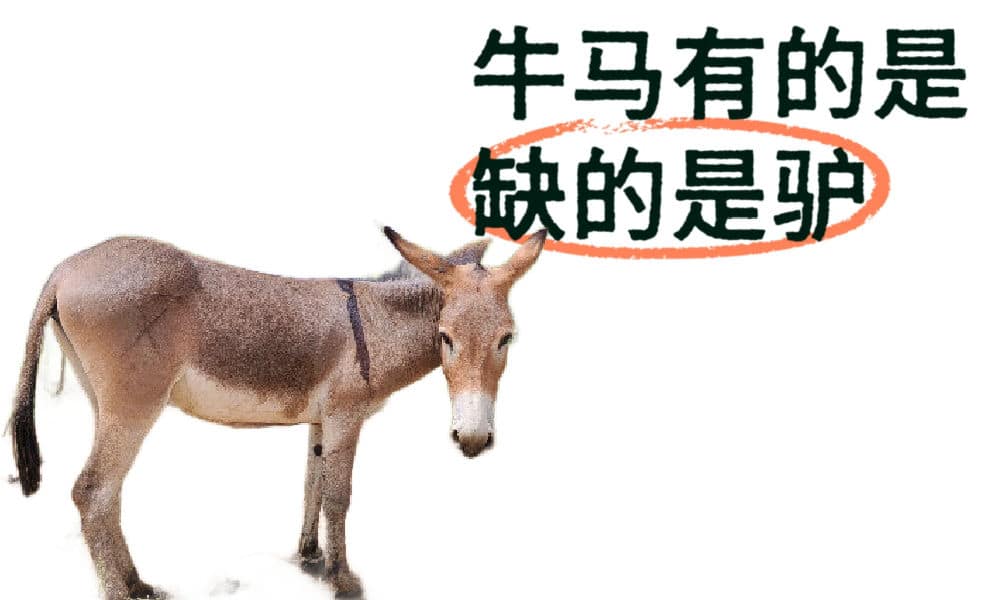
China is facing a serious donkey shortage. China’s donkey population is far below market demand, and the prices of donkey-related products continue to rise.
Recently, this issue went trending on Weibo under hashtags such as “China Currently Faces a Donkey Crisis” (#我国正面临缺驴危机#).
The Donkey Branch of China’s Livestock Association (中国畜牧业协会驴业分会) addressed this issue in Chinese media earlier last week, telling China News Weekly (中国新闻周刊): “We have plenty of cattle and horses in China now — just not enough donkeys” (“目前我国牛马都不缺,就缺驴”).
China’s donkey population has plummeted by nearly 90% over the past decades, from 11.2 million in 1990 to just 1.46 million in 2023.
The massive drop is related to the modernization of China’s agricultural industry, in which the traditional role of donkeys as farming helpers — “tractors” — has diminished. As agricultural machines took over, donkeys lost their role in Chinese villages and were “laid off.”
Donkeys also reproduce slowly, and breeding them is less profitable than pigs or sheep, partly due to their small body size.
Since 2008, Africa has surpassed Asia as the world’s largest donkey-producing region. Over the years, China has increasingly relied on imports to meet its demand for donkey products, with only about 20–30% of the donkey meat on the market coming from domestic sources.
China’s demand for donkeys mostly consists of meat and hides. As for the meat — donkey meat is both popular and culturally relevant in China, especially in northern provinces, where you’ll find many donkey meat dishes, from burgers to soups to donkey meat hotpot (驴肉火锅).
However, the main driver of donkey demand is the need for hides used to produce Ejiao (阿胶) — a traditional Chinese medicine made by stewing and concentrating donkey skin. Demand for Ejiao has surged in recent years, fueling a booming industry.
China’s dwindling donkey population has contributed to widespread overhunting and illegal killings across Africa. In response, the African Union imposed a 15-year ban on donkey skin exports in February 2023 to protect the continent’s remaining donkey population.
As a result of China’s ongoing “donkey crisis,” you’ll see increased prices for donkey hides and Ejiao products, and oh, those “donkey meat burgers” you order in China might actually be horse meat nowadays. Many vendors have switched — some secretly so (although that is officially illegal).
Efforts are underway to reverse the trend, including breeding incentives in Gansu and large-scale farms in Inner Mongolia and Xinjiang.
China is also cooperating with Pakistan, one of the world’s top donkey-producing nations, and will invest $37 million in donkey breeding.
However, experts say the shortage is unlikely to be resolved in the short term.
The quote that was featured by China News Weekly — “We have cows and horses, but no donkeys” (“牛马有的是,就缺驴”) — has sparked viral discussion online, not just because of the actual crisis but also due to some wordplay in Chinese, with “cows and horses” (“牛马”) often referring to hardworking, obedient workers, while “donkey” (“驴”) is used to describe more stubborn and less willing-to-comply individuals.

Not only is this quote making the shortage a metaphor for modern workplace dynamics in China, it also reflects on the state media editor who dared to feature this as the main header for the article. One Weibo user wrote: “It’s easy to be a cow or a horse. But being a donkey takes courage.”
By Manya Koetse
(follow on X, LinkedIn, or Instagram)
Spotted a mistake or want to add something? Please let us know in comments below or email us. First-time commenters, please be patient – we will have to manually approve your comment before it appears.
©2025 Whatsonweibo. All rights reserved. Do not reproduce our content without permission – you can contact us at info@whatsonweibo.com.
Popular Reads
-

 China Memes & Viral3 months ago
China Memes & Viral3 months agoHidden Cameras and Taboo Topics: The Many Layers of the “Nanjing Sister Hong” Scandal
-

 China Books & Literature12 months ago
China Books & Literature12 months agoThe Price of Writing Smut: Inside China’s Crackdown on Erotic Fiction
-

 China Insight5 months ago
China Insight5 months agoUnderstanding the Dr. Xiao Medical Scandal
-

 China Memes & Viral10 months ago
China Memes & Viral10 months agoOur Picks: Top 10 Chinese Buzzwords and Phrases of 2024 Explained
